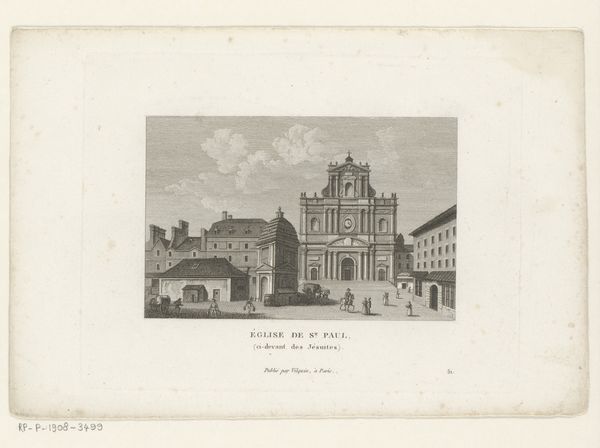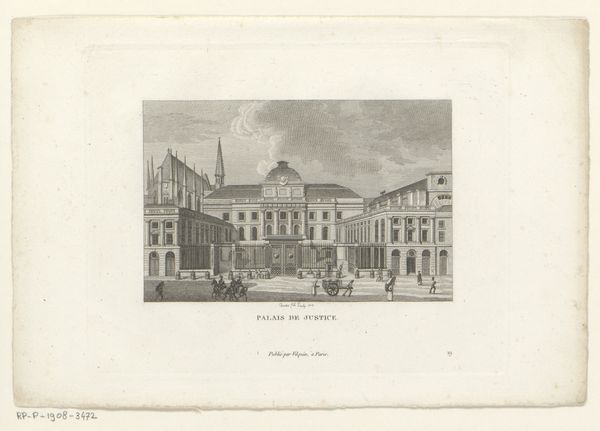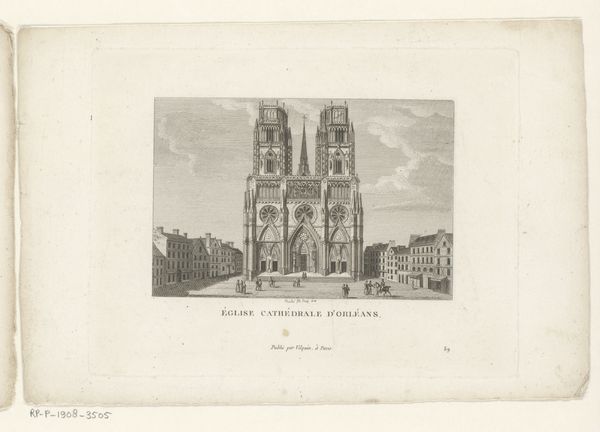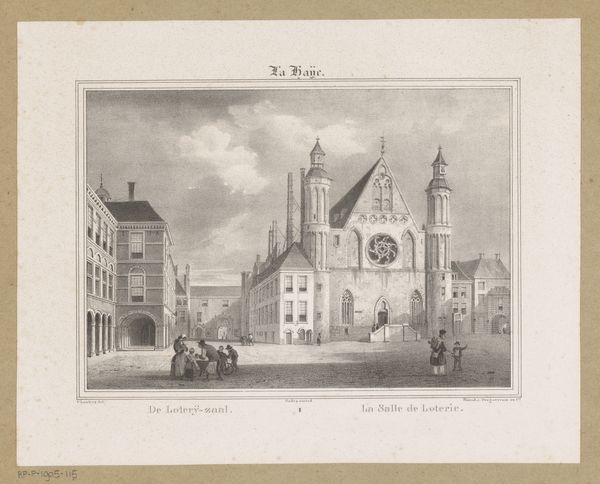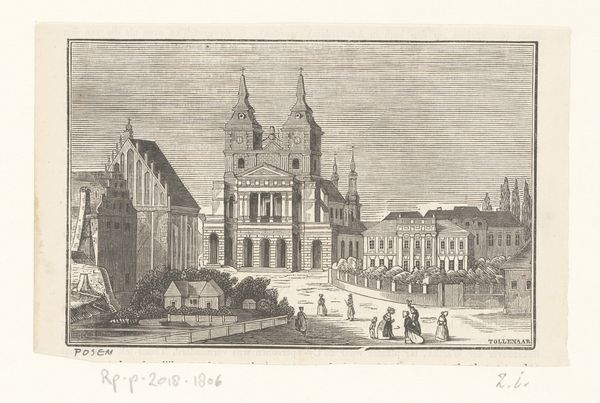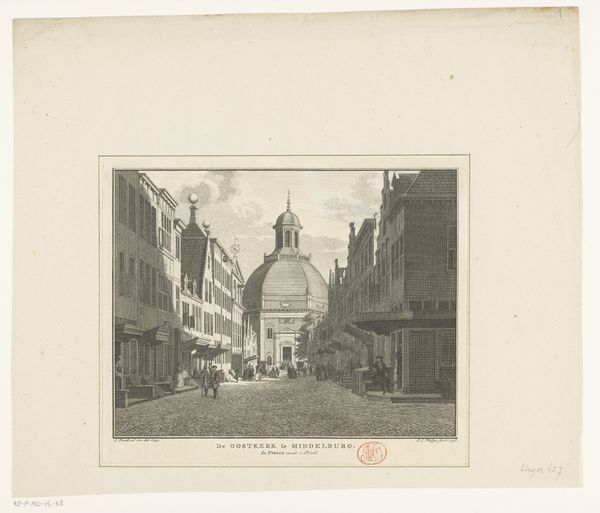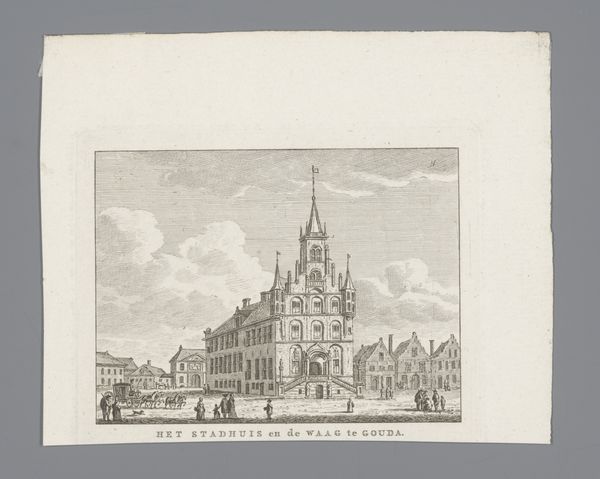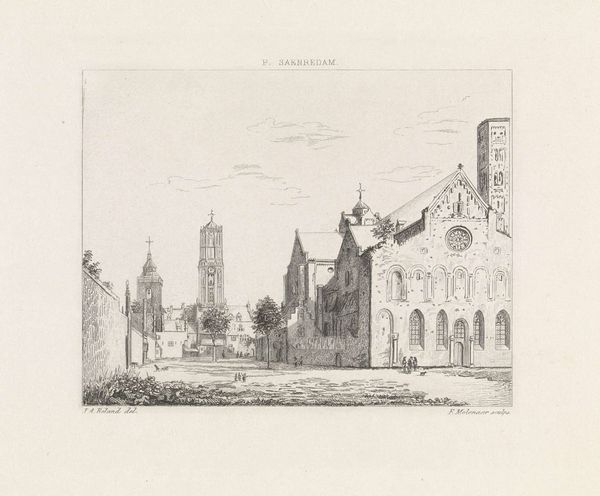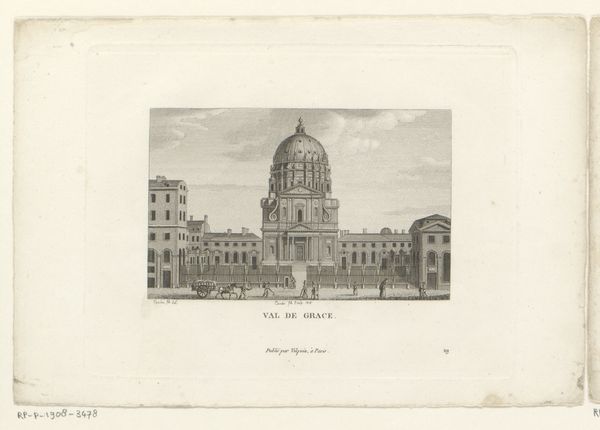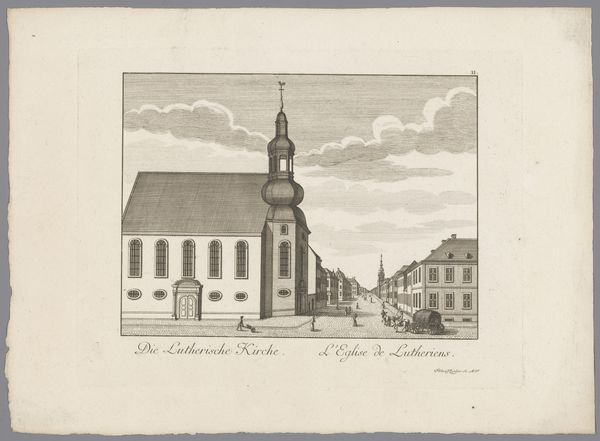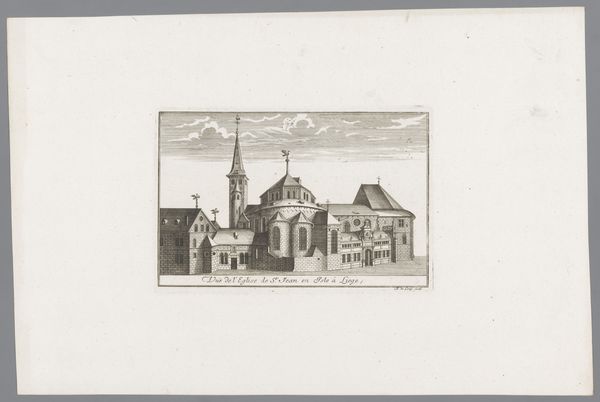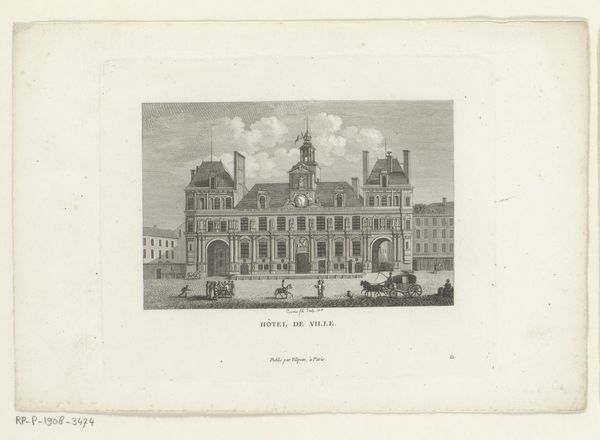
print, engraving
#
neoclacissism
# print
#
landscape
#
cityscape
#
engraving
Dimensions: height 123 mm, width 162 mm
Copyright: Rijks Museum: Open Domain
Editor: So, here we have François Louis Couché's "View of the Cathedral of Saint-Denis," an engraving from 1818. The cool tones and precise lines give it a very formal, almost detached feeling. What draws your eye when you look at this? Curator: The cathedral dominates, of course, but it’s not merely a building. It’s an assertion of power, both spiritual and temporal. Note how the clean lines of neoclassicism attempt to impose order. But ask yourself, what memories, what cultural baggage does such a meticulously rendered edifice carry? Editor: Cultural baggage? Could you elaborate? Curator: Think about Saint-Denis itself. The burial place of French royalty. Its architecture wasn't just about aesthetics; it was a statement. The engraver has captured its likeness with detailed precision that is intended to carry messages, to make certain points about continuity and legitimacy in the face of revolutionary change. Can you sense a tension between old and new? Editor: I do see that. The neoclassical style feels like a deliberate attempt to evoke the grandeur of the past, but maybe to control or contain its chaotic history. Curator: Precisely. And it’s a print. A means of disseminating that controlled image far and wide. It becomes a tool for shaping public perception, a lasting emblem, if you will. Editor: I hadn't considered the printmaking aspect like that. The image isn't just about what is depicted; it’s about how that image is then spread and consumed. It gives a different feel to seeing the actual building now. Curator: Exactly. The symbols evolve with each viewing, resonating in ways perhaps unimagined by the artist. A church as cultural touchstone transformed into print for political power and artistic impression.
Comments
No comments
Be the first to comment and join the conversation on the ultimate creative platform.
